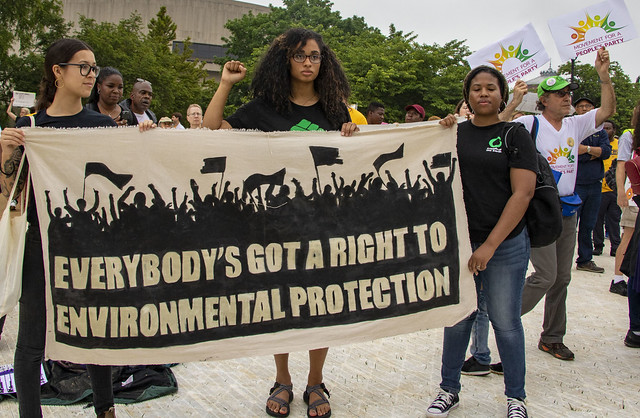Many activists argue that “environmental racism” — a concept dervied from the fact that Indigenous peoples, First Nations, and marginalized or poor communities of color are disproportionately impacted by toxic environmental practices — is a new and pernicious face of colonialism and historic discrimination in Canada.
Today, we’re amplifying some effective campaigns developed by Canadian activists organizing to address environmental racism. With Canada Day behind us, these campaigns seek to figh the legacy of colonialism and racism which continues to impact communities.
Nova Scotia
In 2016, the ENRICH Project developed a map of waste disposal sites, toxic industries, and thermal generating stations that made it clear that Nova Scotia has disproportionately placed environmental hazards — such as industrial sites or landfills — near First Nations and Black rural communities. This has meant a higher incidence of cancer and other illnesses in these communities. Organizations like the Rural Water Watch Association are working to “equip rural Nova Scotian communities (including African Nova Scotian and Indigenous communities) with the knowledge, skills, literacy and resources to address their concerns about drinking water quality,” according The Current on CBC. The Rural Water Project now has funding to test local water for contaminants. However, much more must be done and projects like the Northern Pulp Mill must be stopped.
Ontario
There is so much to be done in Ontario to combat racism and Doug Ford keeps providing more opportunities. However, one of the campaigns I find very inspiring because of its use of art is the work to bring awareness to the chemical valley. The chemical valley, located near Sarnia and the First Nation of Aamjiwnaang, is responsible for the production of gasoline, plastics, pesticides, fertilizers, cosmetics, and a whole bunch of other chemicals. However, chemical valley is also poisoning many people from the First Nation of Aamjiwnaang. Their community has consistently claimed to have higher cancer and miscarriage rates than the national average, and yet the government has not launched a proper health study to investigate their allegations. Activists, like Vanessa and Lindsay Beze Gray have worked to raise awareness through creative popular education methods like launching Toxic Tours of the community. There is also a documentary about Canada’s toxic chemical valley and theatre drawing attention to the crisis.
Newfoundland and Labrador
Hunger strikes have long been a way to demand change. In recent years, the communities opposing the Muskrat Falls megadam project have faced increased repression. And, as Matthew Behrens wrote for rabble.ca, “In 2019, the entirely preventable methylmercury poisoning of the traditional country food web of Indigenous people downstream of the Muskrat Falls megadam in Labrador is set to begin….with remarkably little outrage.'” Since last year, activists have participated in a rolling hunger strike to oppose the dam. The strike spurred hundreds of people to act in solidarity and demand action.
These are just three campaigns. The Activist Toolkit will continue to highlight efforts throughout Canada to fight environmental racism.
Maya Bhullar is the Activist Toolkit Coordinator at rabble.ca. She has over 15 years of professional experience in diverse areas such as migration, labour, urban planning, and community mobilization.
Image: Becker1999/Flickr



